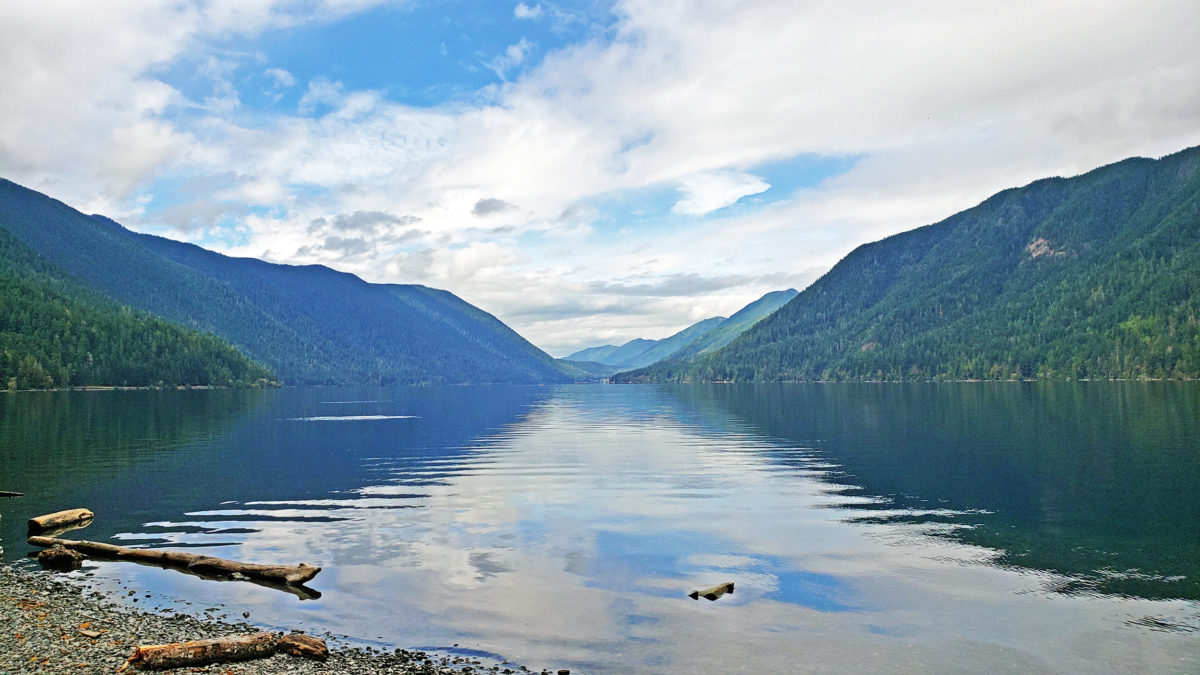by Alan K. Lee
Lake Crescent, the nearby the Sol Duc Valley, and Hurricane Ridge are three of the prime attractions of Olympic National Park. My wife and I had the pleasure of visiting Lake Crescent and vicinity on an “escape from the pandemic” tour of the Olympic Peninsula in September 2020.
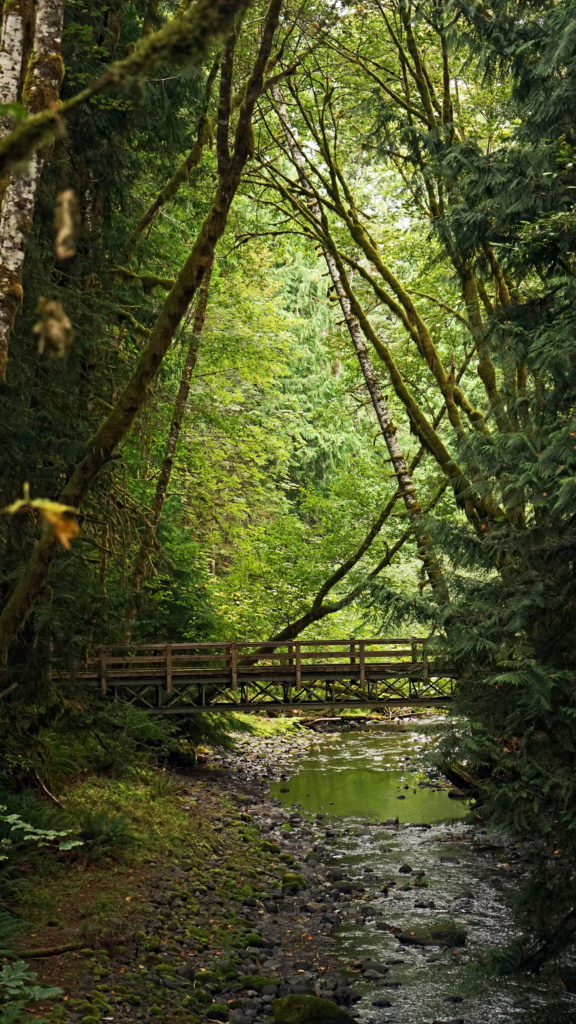
After spending three days in the magnificent Quinault Rain Forest, we made stops at Ruby Beach and Rialto Beach before heading on to Lake Crescent.
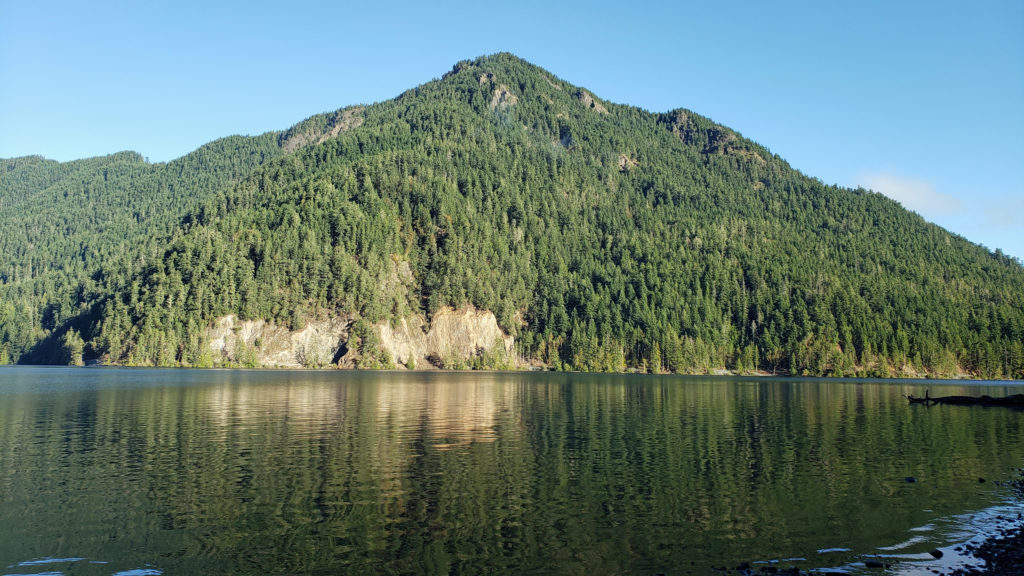
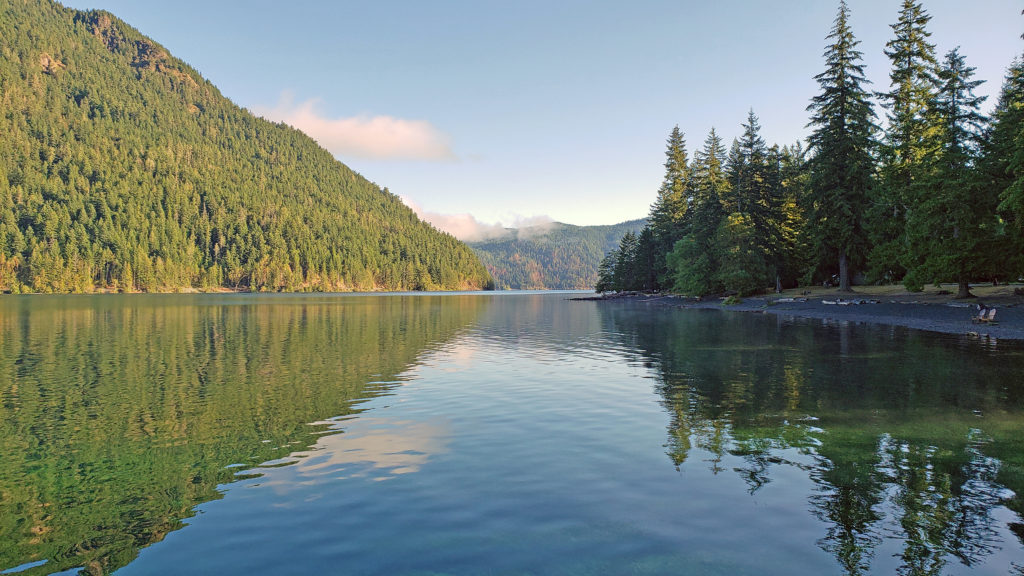
After checking in at Lake Crescent Lodge, we did a short but scenic and relaxing loop hike along the lake shore and through the forest east of the lodge. Lake Crescent lies in a glacier carved valley in the northern portion of Olympic National Park. The lake’s depth (nearly 600 feet) and clarity give the lake a brilliant deep blue color. Lake Crescent and nearby Lake Sutherland were once a single body of water, but a huge landslide about 7000 years ago divided the original lake into the separate lakes found today.
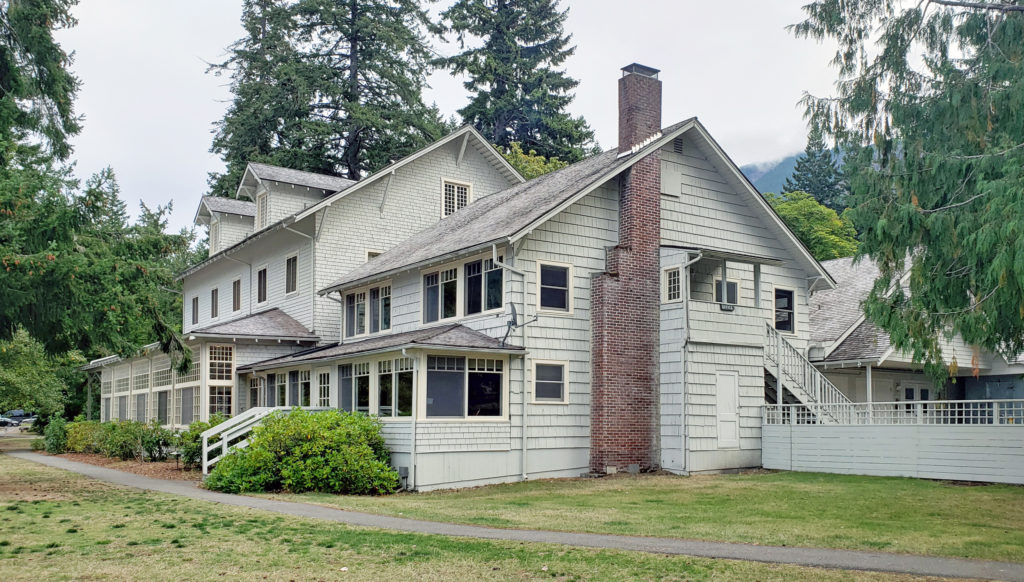
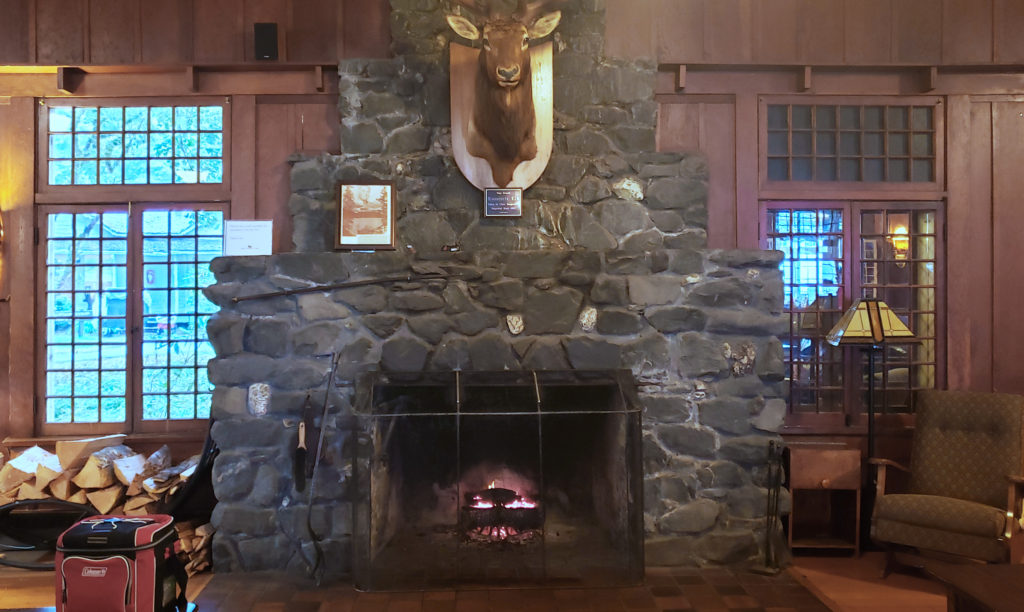
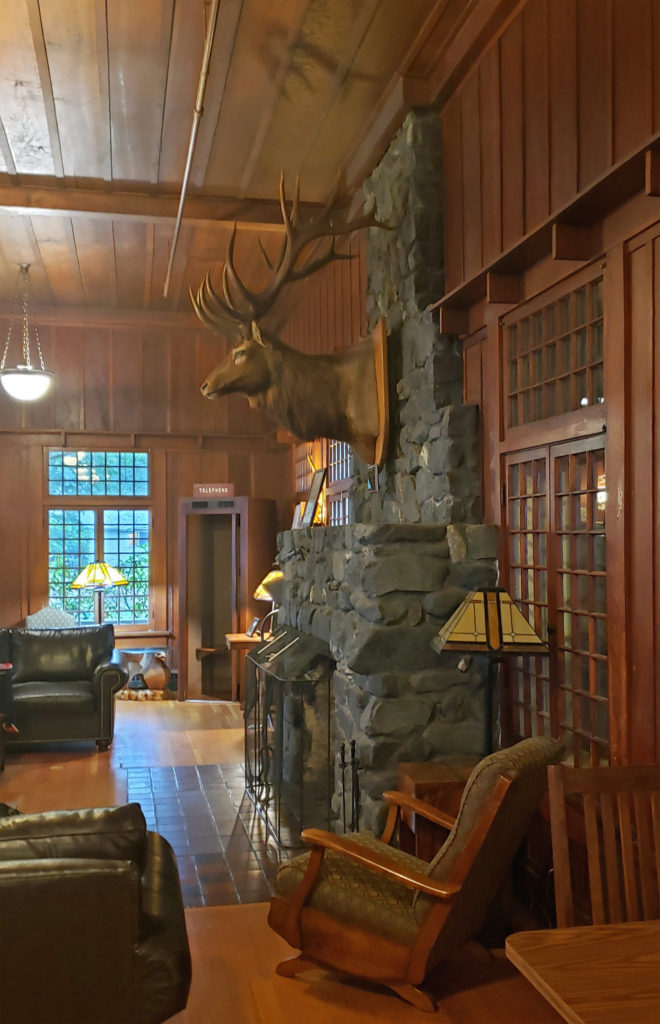
Lake Crescent Lodge, like Lake Quinault Lodge where we stayed on the first part of our trip, is one of the iconic grand lodges of the American West. Built in 1915, Lake Crescent Lodge is perhaps a little less grand than the other grand lodges, but it is no less significant in terms of its history and its romantic appeal. The main lodge is smaller than Lake Quinault Lodge, and the lodge rooms do not have private bathrooms. But there are many individual one and two bedroom cabins on the lake shore – the Singer Tavern Cottages and the Roosevelt Fireplace Cabins – that Lake Quinault and the other comparable lodges lack. More modern additions – the Storm King Rooms, Marymere Rooms, and Pyramid Mountain Rooms – are tucked into the woods a ways back from the shore. Our Storm King Room still had a view of the lake, though, and a nice balcony. All of the cabins and modern additions have private bathrooms.

As at Lake Quinault Lodge, the restaurant at Lake Crescent Lodge served only take out meals when we were there because of the corona virus pandemic. The lodge dining room was open for seating, however, so after our hike that first afternoon we claimed a window table looking out over the lake. Our meals were both very good, but Joan’s salmon “catch of the day” was a small (maybe 4 oz.) portion, and probably not worth the $28 price tag. My fish and chips were cheaper and more substantial, but we chose to drive to nearby Port Angeles for dinner the next two nights.
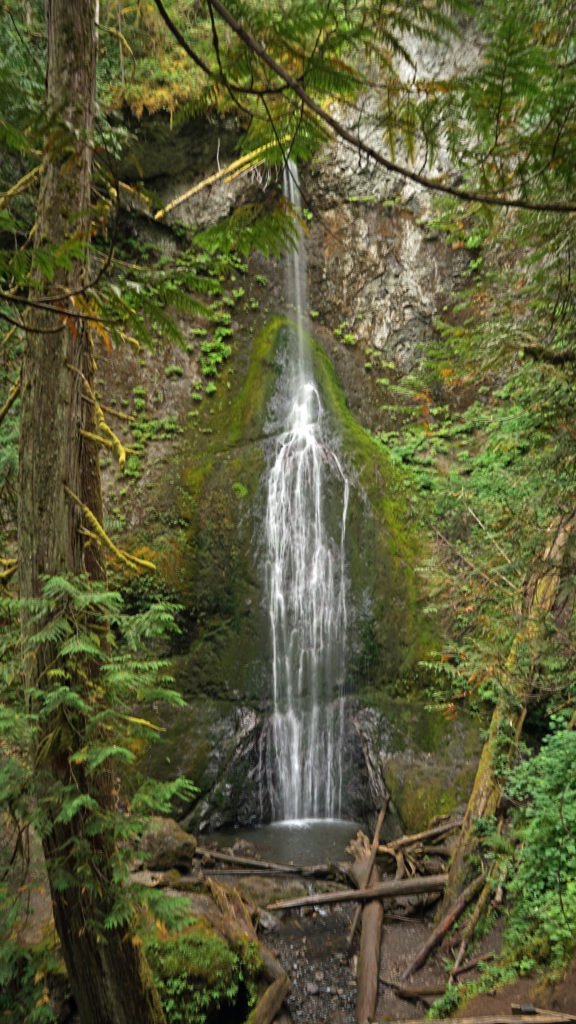
The next morning we hiked from the lodge to Marymere Falls, a picturesque 90 foot waterfall on Falls Creek. The trail is an easy 1.5 mile hike through old growth forest with minimal elevation gain to the lower viewpoint. From there the trail climbs steeply to an upper viewpoint. Both viewpoints offer unobstructed views of the falls.
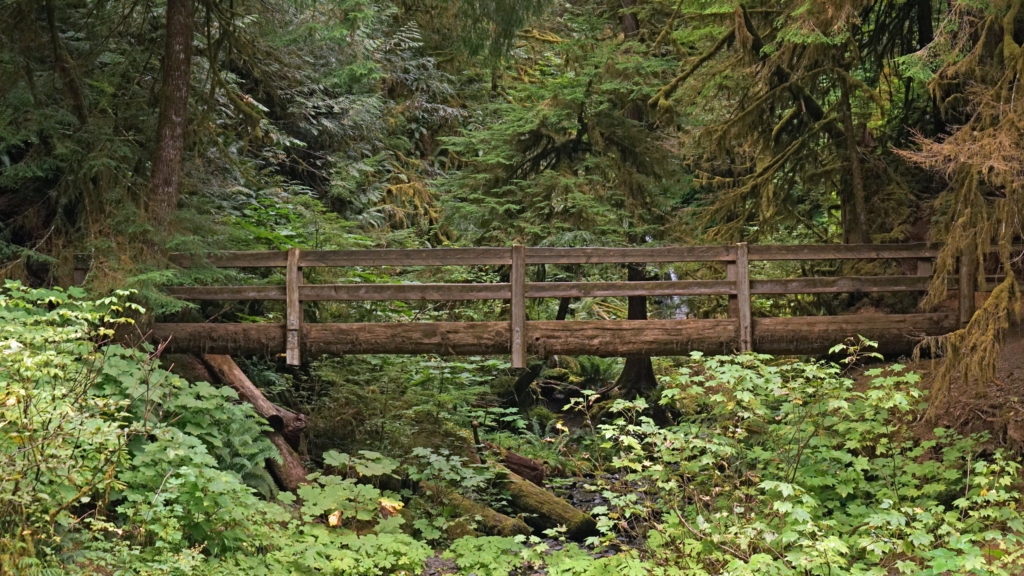
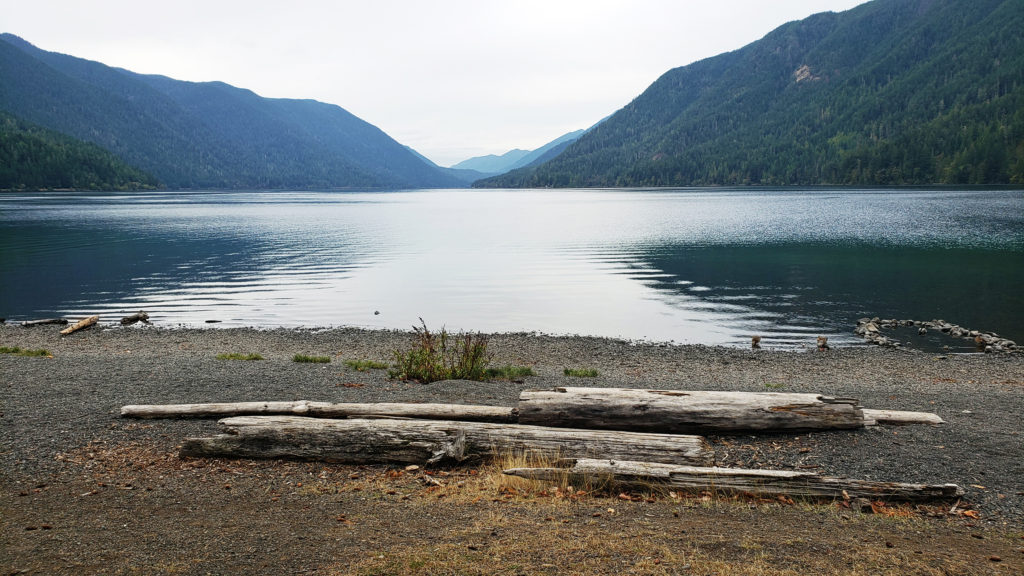
My wife took her kayak out for a paddle on the lake that afternoon while I relaxed on our room’s balcony with a good book (Graham Greene’s Travels With My Aunt).
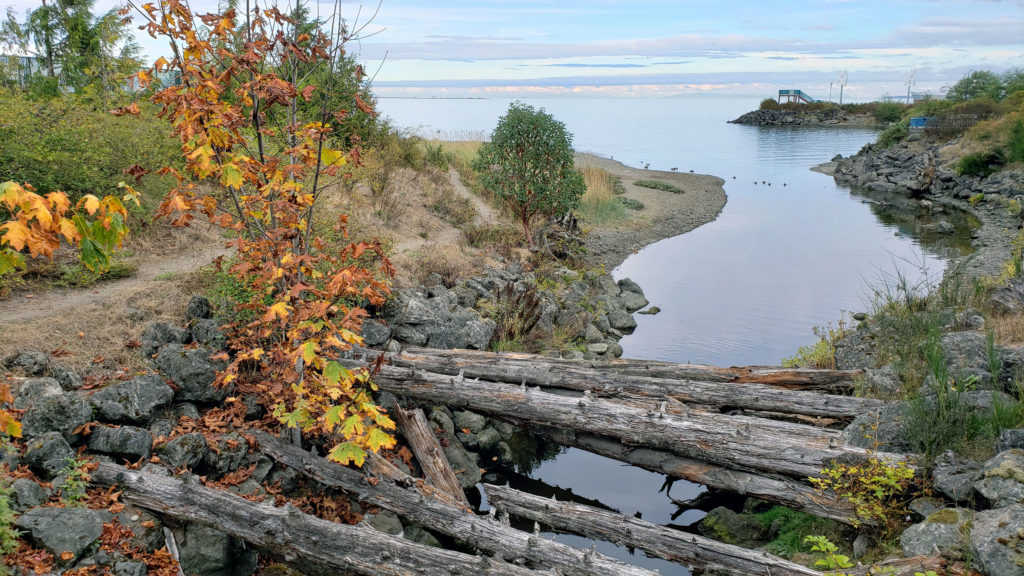
That evening we drove into Port Angeles, about 20 miles to the east, and dined at Next Door Gastropub. They have a good selection of beers and the Cuban pork sandwich that I had was quite good. After dinner we wandered around a bit, searching out some of the many public artworks scattered around the downtown area, before returning to Lake Crescent.

The following morning, we drove to the Sol Duc Valley west of Lake Crescent and hiked to Sol Duc Falls. Originally called “Sole Duck,” the spelling was officially changed to Sol Duc in 1922 to more accurately reflect its derivation from a Quileute language word meaning sparkling waters. The family friendly trail (less than a mile long) takes you through a dense forest with minimal elevation gain to the 48 foot falls. There the Sol Duc River breaks into a number of channels before making a sideways drop into a deeper gorge. There are many bigger and more spectacular waterfalls in Olympic National Park, but certainly none more scenic.
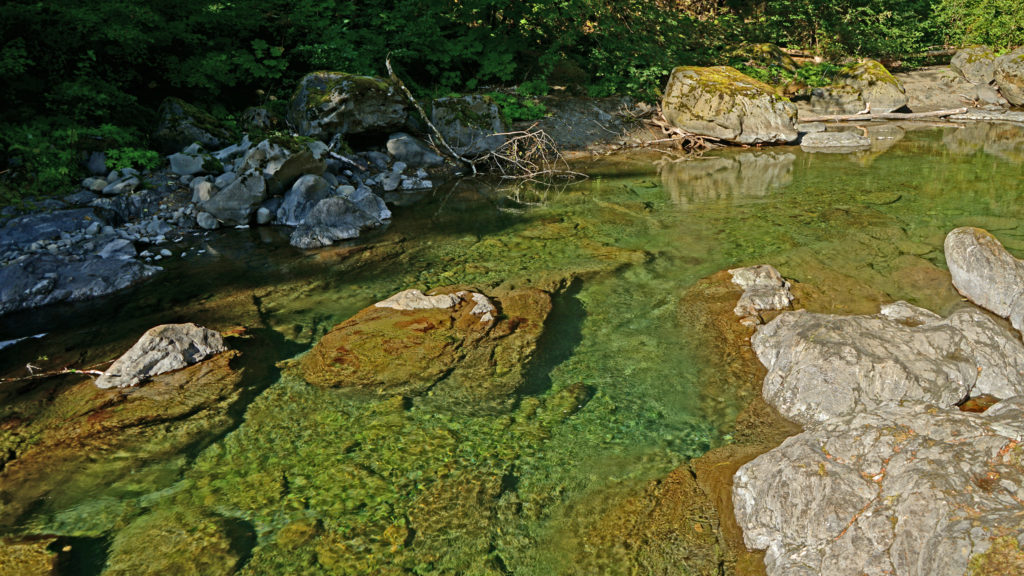
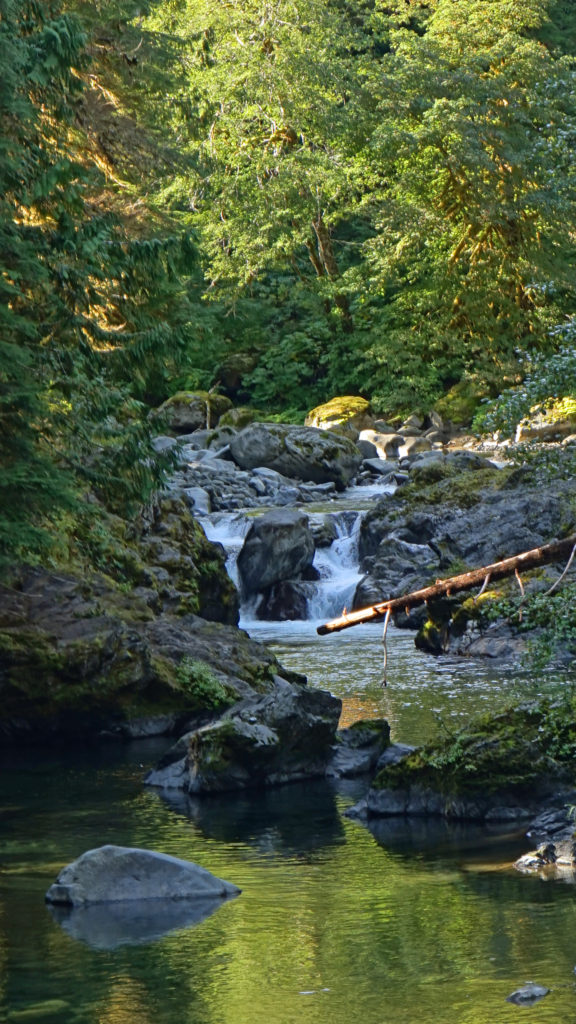 The nearby Sol Duc Hot Springs was once the site of a five star hotel. Built in 1912, the hotel lasted only four years, though, before burning down in 1916. The resort was rebuilt on a less grand scale in the 1920s and operated for a half century before closing in the 1970s. After being vacant for a number of years, it was renovated and reopened in the 1980s. Today the resort includes a restaurant and a variety of cabins with private bathrooms and modern amenities. Those staying at the resort have free access to a swimming pool, soaking pools, and hot tubs, all heated by water from the hot springs. People not staying at the resort can also enjoy the hot springs for a small fee.
The nearby Sol Duc Hot Springs was once the site of a five star hotel. Built in 1912, the hotel lasted only four years, though, before burning down in 1916. The resort was rebuilt on a less grand scale in the 1920s and operated for a half century before closing in the 1970s. After being vacant for a number of years, it was renovated and reopened in the 1980s. Today the resort includes a restaurant and a variety of cabins with private bathrooms and modern amenities. Those staying at the resort have free access to a swimming pool, soaking pools, and hot tubs, all heated by water from the hot springs. People not staying at the resort can also enjoy the hot springs for a small fee.
A 17 unit RV campground that will accommodate RVs up to 36 feet is located a quarter mile from the resort. The RV campground sites have water and electric hookups, and there is a sewer dump station. A separate 82 unit “dry” campground is located nearby. The campground has restrooms, but no showers. The camp sites will accommodate small RVs, but do not have water or electric hookups.
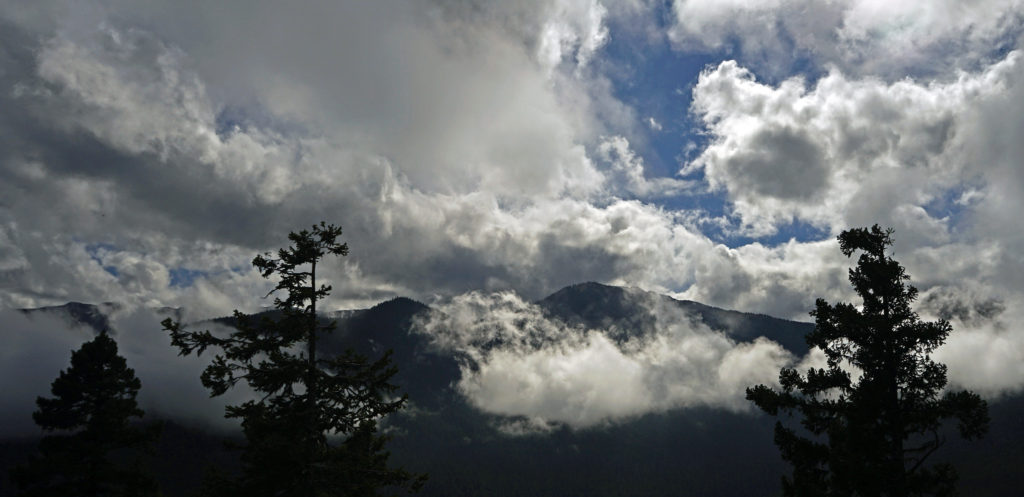
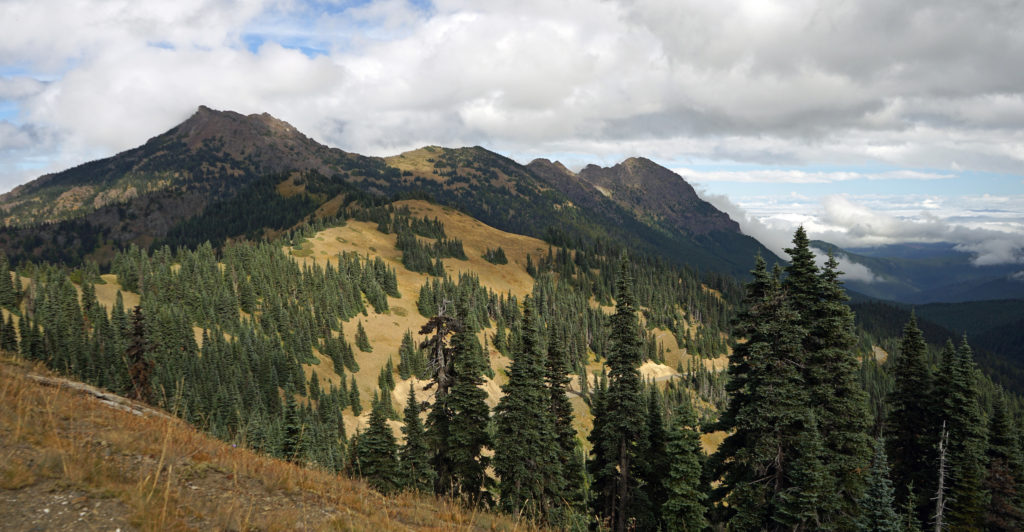 After our hike to Sol Duc Falls we drove to the Hurricane Ridge Visitor Center to do some more hiking and sightseeing. The visitor center is located 17 miles south of Port Angeles at an elevation of 5242 feet above sea level. Hurricane Ridge is the only alpine area in Olympic National Park accessible by car, which makes it very popular and means it can be very crowded, especially on summer weekends. We were there in the middle of the week in late September, though, so crowds weren’t much of an issue.
After our hike to Sol Duc Falls we drove to the Hurricane Ridge Visitor Center to do some more hiking and sightseeing. The visitor center is located 17 miles south of Port Angeles at an elevation of 5242 feet above sea level. Hurricane Ridge is the only alpine area in Olympic National Park accessible by car, which makes it very popular and means it can be very crowded, especially on summer weekends. We were there in the middle of the week in late September, though, so crowds weren’t much of an issue.
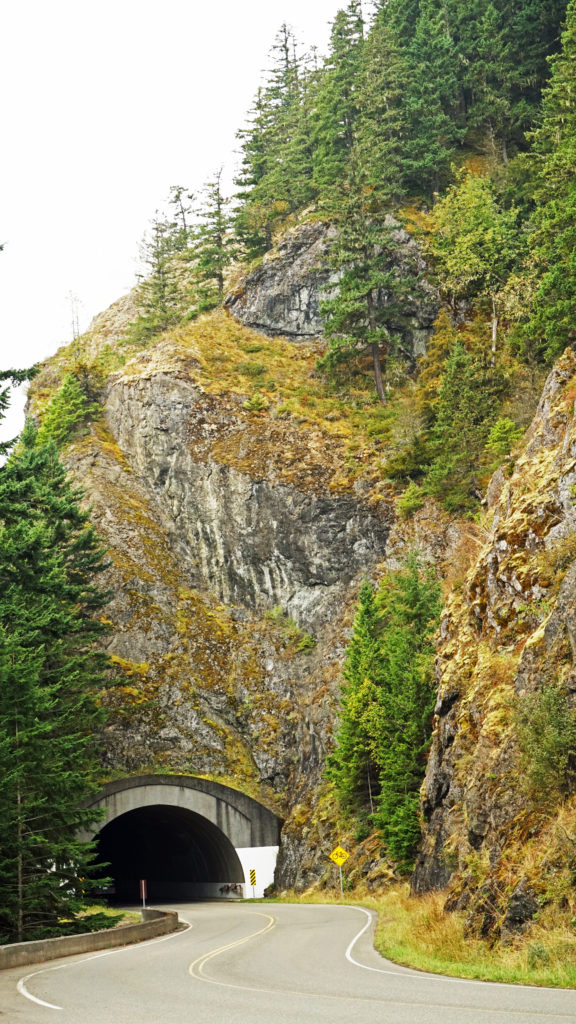 The Hurricane Ridge Road is paved, but winding with poor sight lines and several tunnels. It is also a popular challenge for cyclists because of the elevation gain, so go slow and watch for bicycles on the road.
The Hurricane Ridge Road is paved, but winding with poor sight lines and several tunnels. It is also a popular challenge for cyclists because of the elevation gain, so go slow and watch for bicycles on the road.
The visitor center’s gift shop and restrooms were open, but the main part of the center was closed due to the corona virus pandemic. The rangers were manning an information desk outside on the sidewalk, though, where they were giving out maps and answering questions.
Several short loop and out and back hikes ranging from a half mile to a mile and a half take you from the visitor center to viewpoints with great views in all directions. Look for wildlife when you’re there. We’ve seen mountain goats there in the past, and on this visit a doe was grazing only a few feet off one of the trails, almost within arms reach. Past the visitor center, at the end of the road, you’ll find the trailhead for a longer 3.2 mile round trip hike to Hurricane Hill with even more spectacular panoramic views.
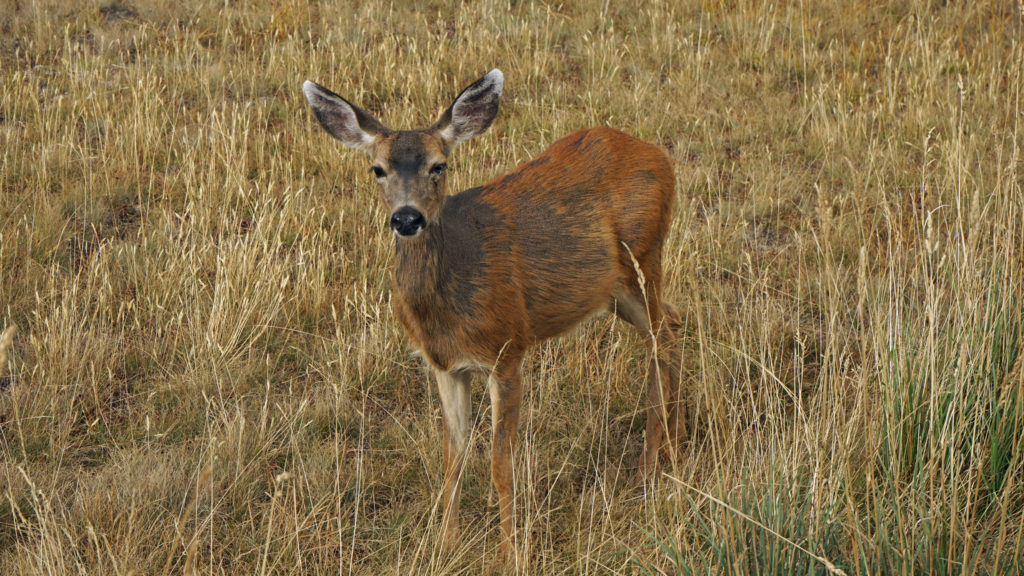
The following morning we somewhat reluctantly checked out of the lodge. Our six days in the Olympics were a much needed getaway from both the pandemic and the wildfires that had threatened many of the populated areas of western Oregon. We in the Pacific Northwest are lucky to have such a magnificent place so close at hand. Olympic National Park is a jewel worth visiting, no matter how far you have to come to experience it.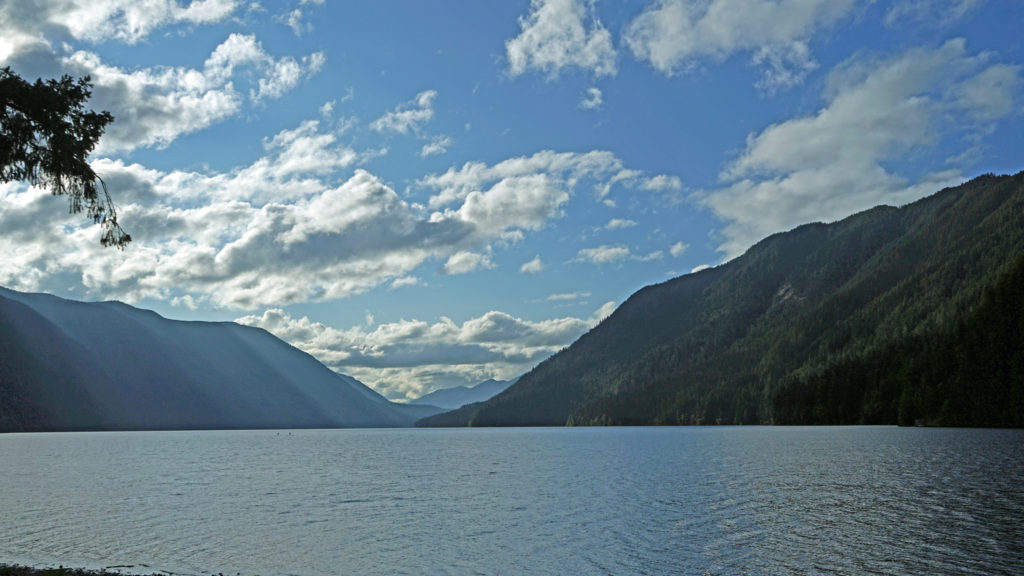
From Crescent Lake, we headed on to Port Townsend for the final part of our trip. Look for an upcoming post on Port Townsend, one of my favorite places in the Northwest, and home of the annual Wooden Boat Festival.
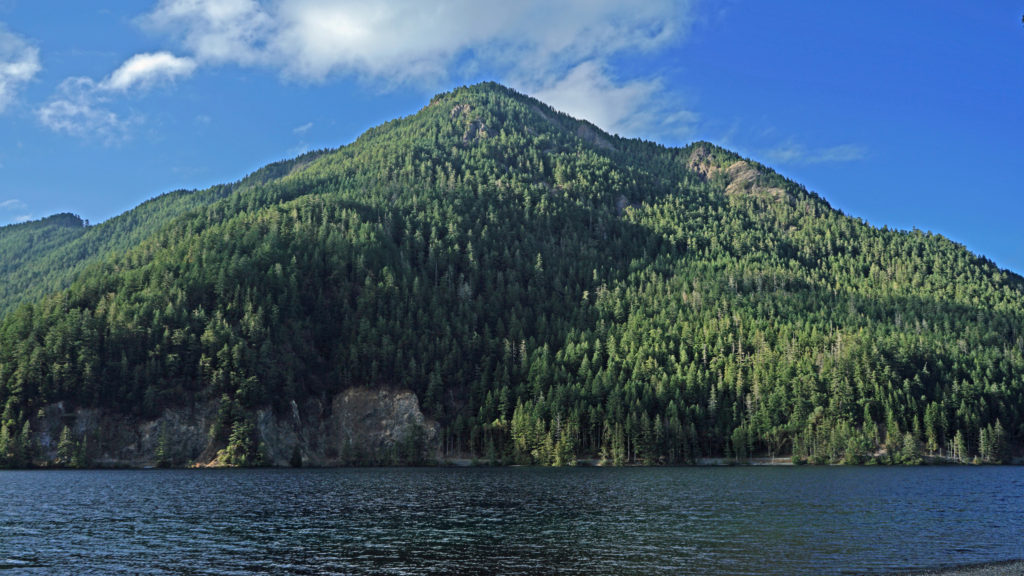 Originally posted November 7, 2020. Updated and re-posted November 9, 2022.
Originally posted November 7, 2020. Updated and re-posted November 9, 2022.
All photos © Alan K. Lee

